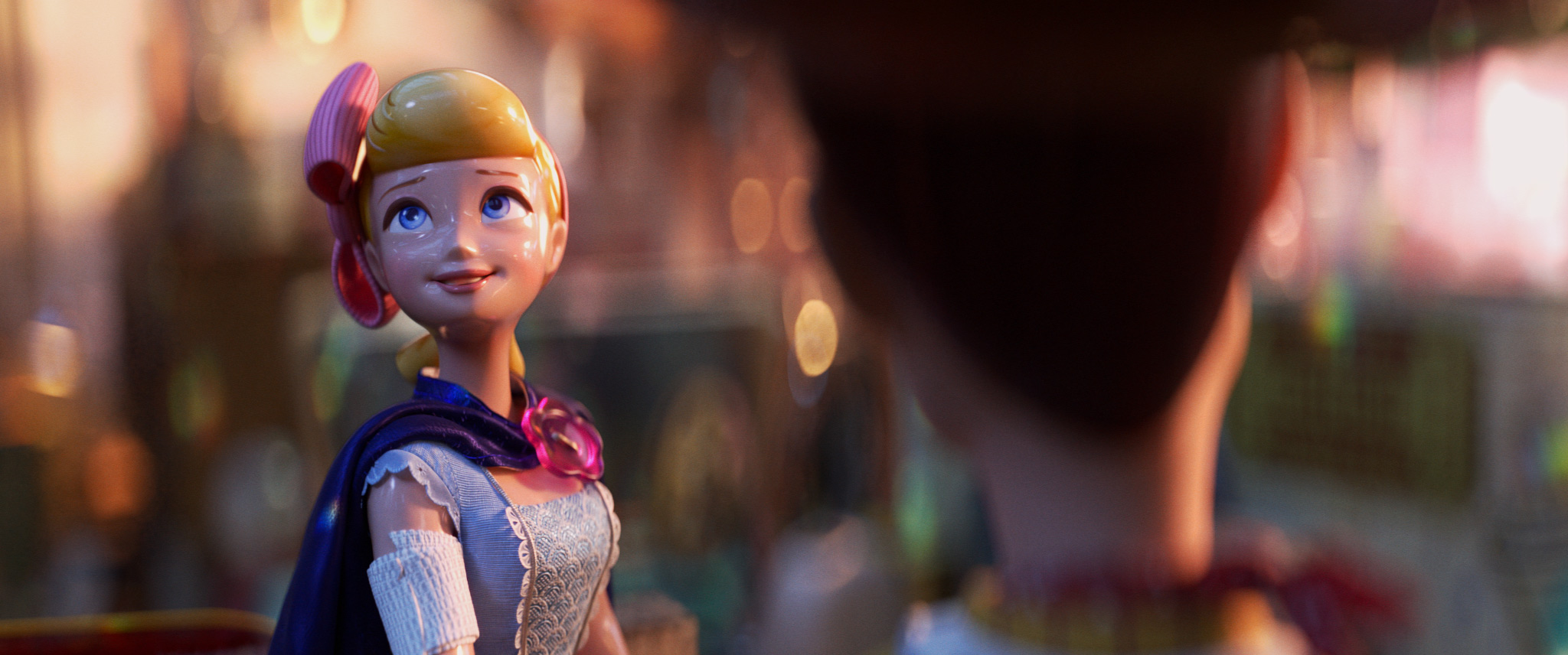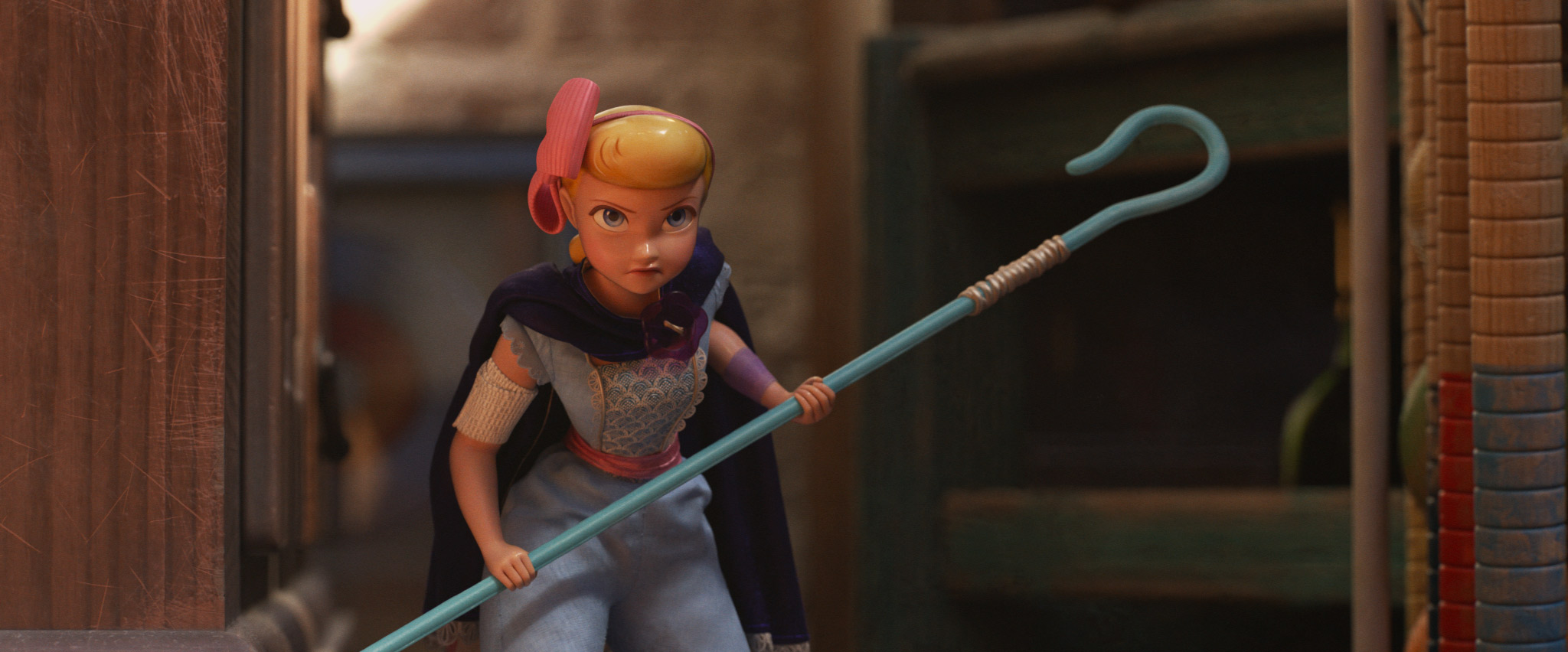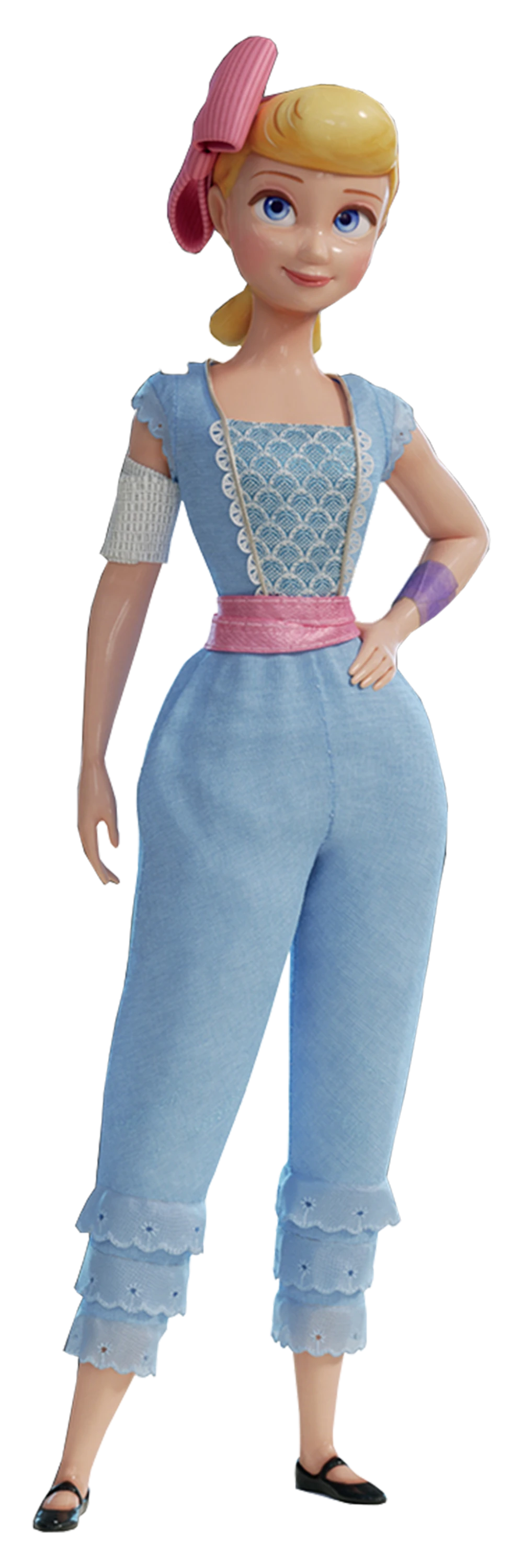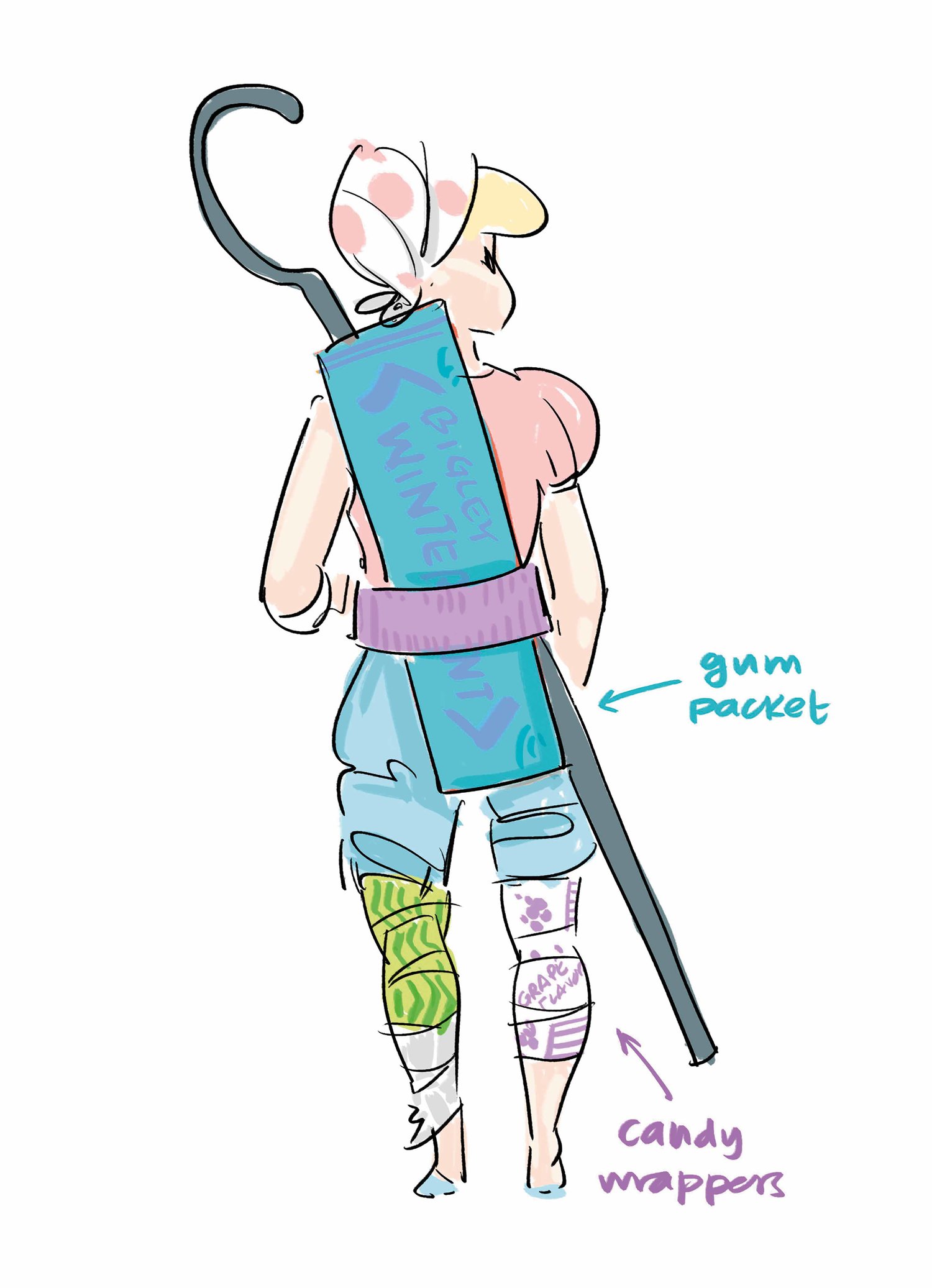



Bo Peep's evolution in the Toy Story franchise can be examined through a feminist lens, showcasing her transformation from a traditional damsel in distress to a symbol of empowerment and autonomy.
In the first three Toy Story movies, Bo Peep's character is portrayed as a traditional love interest for Woody, with her role largely defined by her relationship with him. This portrayal has been criticized by Luisi (2019) as maintaining the male gaze. Bo Peep's rare appearances in these films often involve flirtatious interactions with Woody, like her asking if she should "find someone else to watch the sheep for me tonight" (Lasseter, 1995). According to Luisi's (2019) analysis, female characters in the trilogy are often depicted as the male characters' emotional support system, objects of desire for the male characters, romantically assertive toward the male characters, and the end of each movie paired with the male characters.



However, Bo Peep’s screen time is limited, and she does not play a central role in the main plot. According to Luisi (2019), female characters in earlier movies are not only shown as passive participants but also rarely influence the plot. Therefore Luisi (2019) highlights the significant moment when Bo Peep is absent during a crucial decision-making scene, leaving the male characters to discuss the future among themselves. This intentional exclusion reflects a patriarchal hierarchy, reminiscent of historical contexts where women were excluded from decision-making processes. Thus, Bo Peep's lack of agency underscores the absence of female voices in the community, highlighting the film's patriarchal portrayal (2019). This aligns with Li (2022), who argues that this pattern reflects animated films from the 1990s where male characters are often portrayed as central and powerful, while independent female characters are dismissed. In summary, the Toy Story trilogy's portrayal of gendered interactions suggests that male characters were more important to the overall storyline (Luisi, 2019).


As the franchise progressed, Bo Peep underwent a significant evolution redefining her character. In Toy Story 4, Bo Peep undergoes a significant transformation, emerging as a central character with agency and independence. Bo Peep has evolved from a passive love interest to a strong, independent character who thrives on her own. Since the first film, there have been changes in cultural values and perceptions of women's roles, which are reflected in this evolution. In the fourth movie, Bo Peep is portrayed as resourceful and resilient, demonstrating leadership qualities and a willingness to take risks. She becomes a mentor to other toys, encouraging them to embrace their individuality and find their own paths. Traditional gender norms and stereotypes that were ingrained in the franchise's prior movies are challenged by this drastic change. Li (2022) adds that Bo Peep's transformation is a reflection of a larger trend in the animation business toward gender equality, with women and men portrayed more equally in meaningful positions.
Image Credits:
1-2 © 1986-2024 DISNEY / PIXAR
3-5 Bo Peep, www.pixar.fandom.com